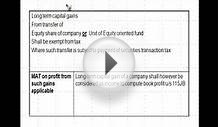
 Christian Charisius/ReutersTwenty years ago, one bond-trading hedge investment grew from launch to over $100 billion in assets in less than three years. It saw yearly comes back of over 40 %. It was run by finance veterans, PhDs, teachers, and two Nobel Prize winners. Everybody else on Wall Street wished a piece of their particular profits.
Christian Charisius/ReutersTwenty years ago, one bond-trading hedge investment grew from launch to over $100 billion in assets in less than three years. It saw yearly comes back of over 40 %. It was run by finance veterans, PhDs, teachers, and two Nobel Prize winners. Everybody else on Wall Street wished a piece of their particular profits.
But by 1998, that firm ended up being primed to reveal The united states's largest banks to over $1 trillion in default risks. The demise associated with firm, Long-Term Capital control (LTCM), was quick and unexpected. In less than one-year, LTCM had lost $4.4 billion of their $4.7 billion in capital.
The entire story is recounted in Roger Lowenstein's guide, with details on the particular methods and financial concepts employed by Long-Term. It really is a complete must-read for anybody focusing on Wall Street, so we've summarized the basic principles available in ten slides.
This story has actually all the players — the Federal Reserve, which eventually stepped in and organized a bailout, and all sorts of the major banks that performed the heavy-lifting: Bear Stearns, Salomon Smith Barney, Bankers Trust, J.P. Morgan, Lehman Brothers, Chase New york, Merrill Lynch, Morgan Stanley, and Goldman Sachs.
In desperate need of a $4 billion bailout, the crumbling firm is at the mercy regarding the banking institutions it had as soon as snubbed and controlled.
YOU MIGHT ALSO LIKE












